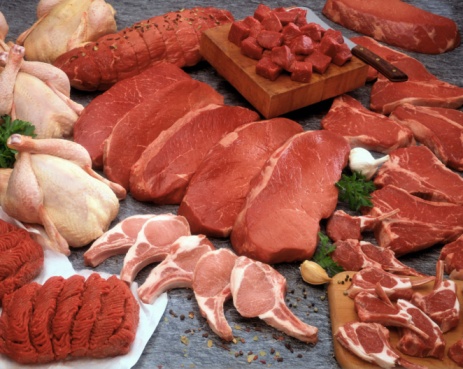
The pregnant mother is going through many physiological changes, which means the micro-nutrients of the mother’s daily diet must accompany such changes. There is a great amount of research that points to proper nutrients and supplementation in a pregnant and lactating mother’s diet and the low morbidity and healthy birth weight and baby health success of the new born. There has been much importance placed on folate, iron (do decrease anemia risk) and iodine levels in pregnant mothers in the past, but this article will focus on two minerals that seem to be consistently deficient in most women of the child bearing age: Vitamin D and Iron. The following is an overview as to why these two deserve extra attention.
Vitamin D helps to regulate the amount of calcium and phosphate in the body and these are needed to keep bones healthy. Pregnant women need ample amounts of vitamin D during the duration of pregnancy to provide your baby with enough vitamin D for the first few months of life. Vitamin D helps to grow the baby’s bones and muscles. It is also a great immunity booster for both mother and baby. 
Vitamin D can be found naturally in oily fish (such as salmon, or sardines), eggs, meats and mushrooms. Many manufacturers add it to breakfast cereals, soy products, dairy and dairy substitute products (almond, hemp, flax and coconut, and rice milks), powdered milks, and alternative butter and fat spreads such as margarine.

The best source of vitamin D is summer or natural sunlight. The amount of time you need in the sun to make enough vitamin D is different for every person, and also depends on skin type. I suggest 15 minutes a day for most people. This short 15 minutes a day is enough sun for most people and should not cause burning or tanning. People with dark skin, are always indoors, live in a climate where there is not too much sun, or ones who always cover the skin, may be at a particularly higher risk of vitamin D deficiency.
Fish liver oil, fatty fish, and fortified milk, eggs, milk alternatives, mushrooms and cereal products all contain vitamin D. Be sure to check food labels: Some eggs, cheeses, yogurts, and cereals are fortified while others aren't. All milk is vitamin D fortified.
3 ounces catfish, cooked: 570 IU
3.5 ounces salmon, cooked: 360 IU (aim for wild caught)
3.5 ounces mackerel, cooked: 345 IU
3 ounces tuna fish, canned in oil: 200 IU
1.75 ounces sardines, canned in oil, drained: 250 IU
1 cup milk, fortified with 25% of daily value (DV) of vitamin D: 100 IU
1 cup organic, tree ripened orange juice, fortified with 25% of DV of vitamin D: 100 IU
1 cup fortified skim or other milk alternative: 98-125 IU
1 tablespoon margarine or oil/butter spread, fortified: 60 IU
1 cup ready-to-eat cereal, fortified with 10% of DV of vitamin D: 40 IU
1 egg yolk: 20 IU
During pregnancy, the average woman's daily requirement for iron doubles, from 15 to 30 milligrams because iron is a major component of hemoglobin, which carries oxygen throughout the body and to the placenta. And also because the blood in an expecting mother’s body must circulate at twice the volume as non-pregnant people, sufficient iron also enables both mother and fetus to form new red blood cells and fuels energy.
A shortage of iron can leave an expectant mom light headed, tired, pale, and infection-prone. Women who are pregnant that have an iron deficiency, could opt for an iron supplement in addition to your prenatal vitamins, but the best way to absorb iron is through true whole foods (aim for 4-5 servings a day). Also, pair your sources of iron with foods rich in vitamin C (vegetables and fruit), which allows the body to absorb the iron better. Refrain from high caffeine foods (tea and coffee) which hinder the absorption as well.
Red meat is one of the best sources of iron for pregnant women. I love free range buffalo. If your diet is free of animal protein, legumes, vegetables, and grains are great alternative choices.
3 ounces lean beef chuck: 3.2 mg
3 ounces free range buffalo: 1.8 mg
3 ounces roast turkey breast: 1.4 mg
3 ounces roast chicken breast: 1.1 mg
3 ounces halibut: 0.9 mg
3 ounces pork loin: 0.8 mg
1 cup iron-fortified ready-to-eat cereal: 24 mg
1 cup fortified oatmeal: 10 mg
1 cup edamame: 8.8 mg
1 cup cooked lentils: 6.6 mg
1 cup cooked kidney beans: 5.2 mg
Spirulina (1 tsp): 5 mg
Pumpkin seeds (1 ounce): 4.2 mg
Quinoa (4 ounces): 4 mg
Blackstrap molasses (1 tbsp): 4 mg
Tomato paste (4 ounces): 3.9 mg
White beans (1/2 cup) 3.9 mg
Dried peaches (6 halves): 3.1 mg
Prune juice (8 ounces): 3 mg
Lentils (4 ounces): 3 mg
1 cup chickpeas: 4.8 mg
1 cup lima beans: 4.5 mg
1 cup cooked black or pinto beans: 3.6 mg
1/2 cup raw firm tofu: 3.4 mg
1/2 cup boiled spinach: 3.2 mg
1 slice whole wheat or sprouted bread: 0.9 mg
1/4 cup raisins: 0.75 mg
Sources: care2.com, nhs.uk, babycenter.com, parenting.com
